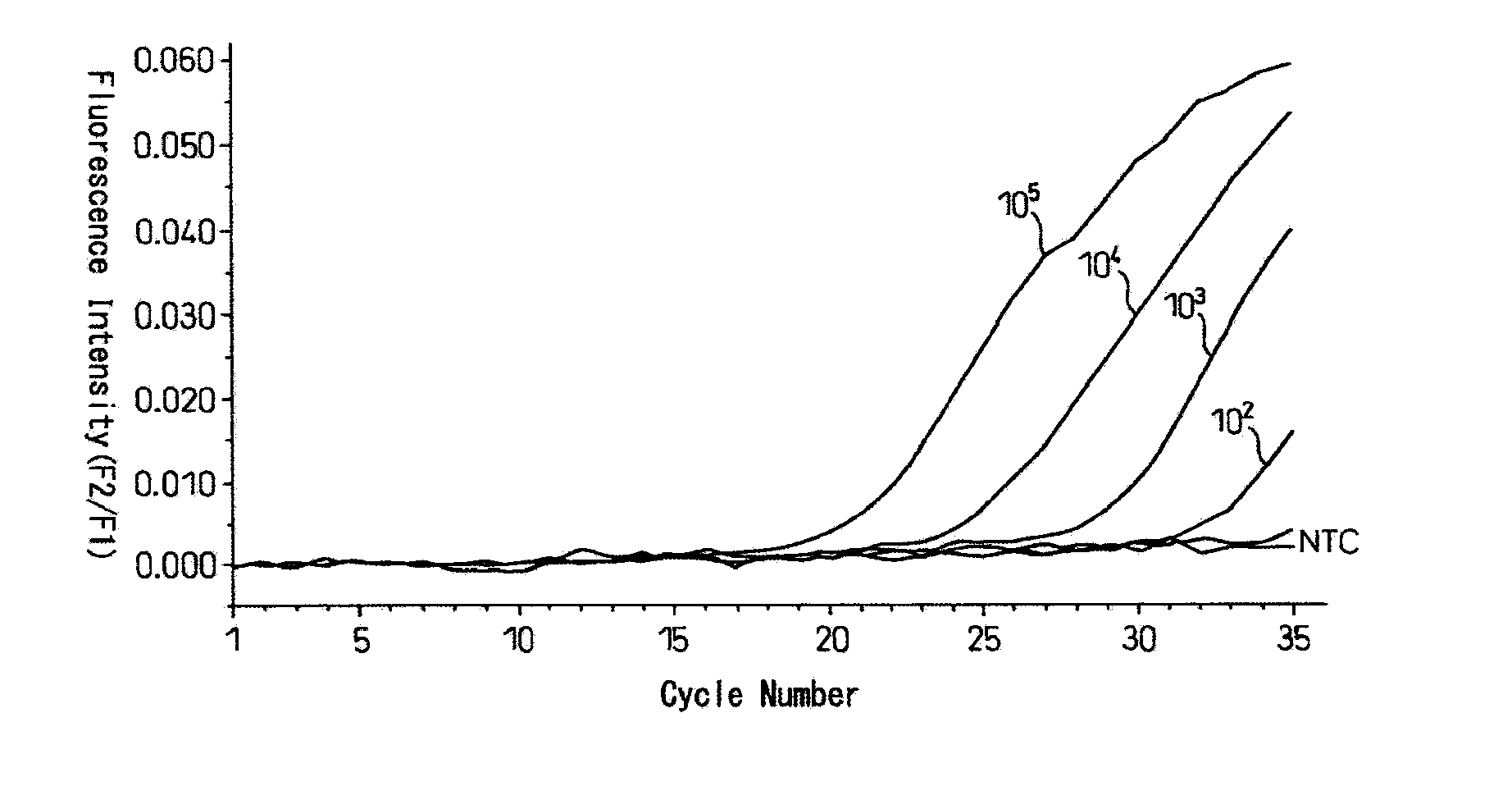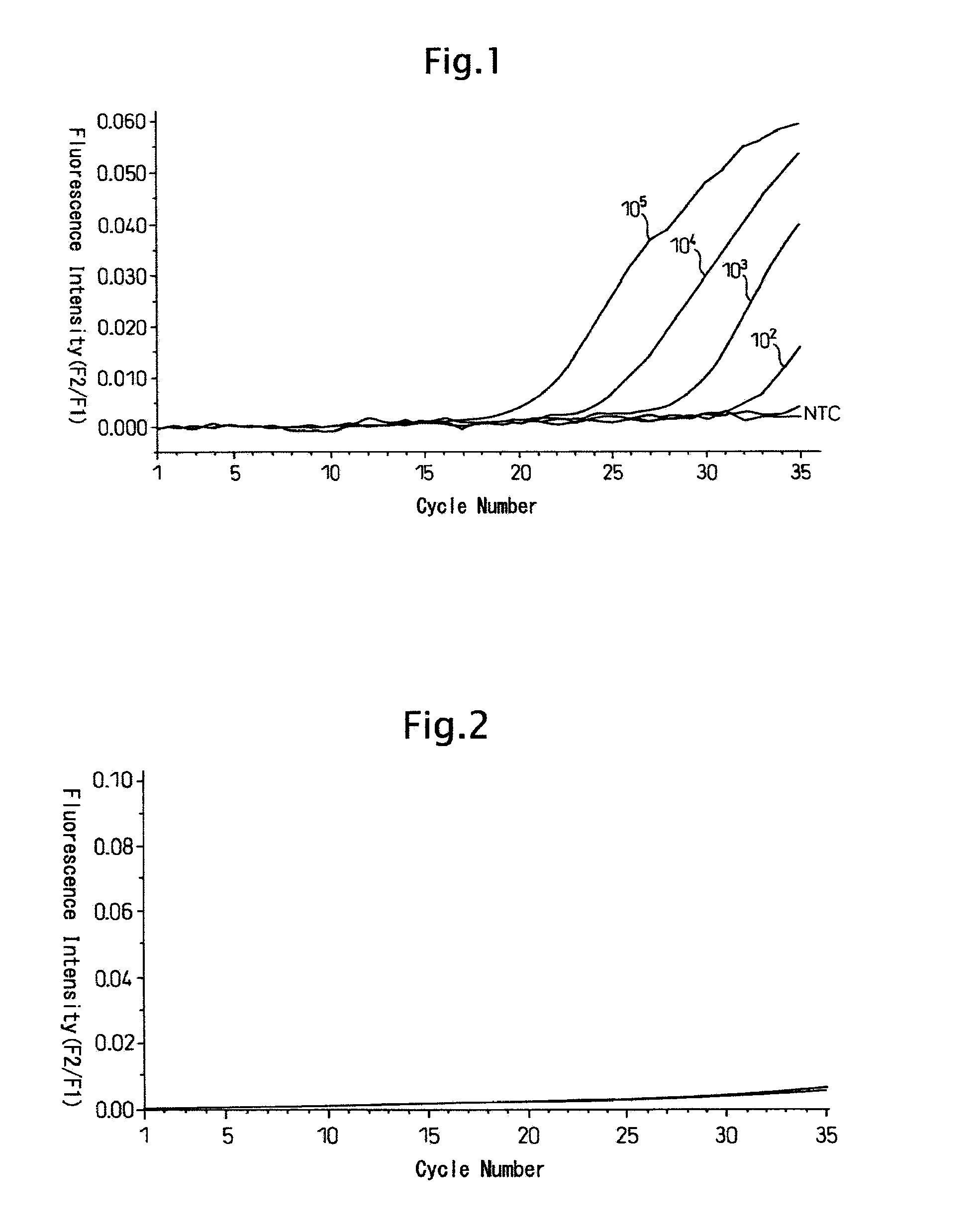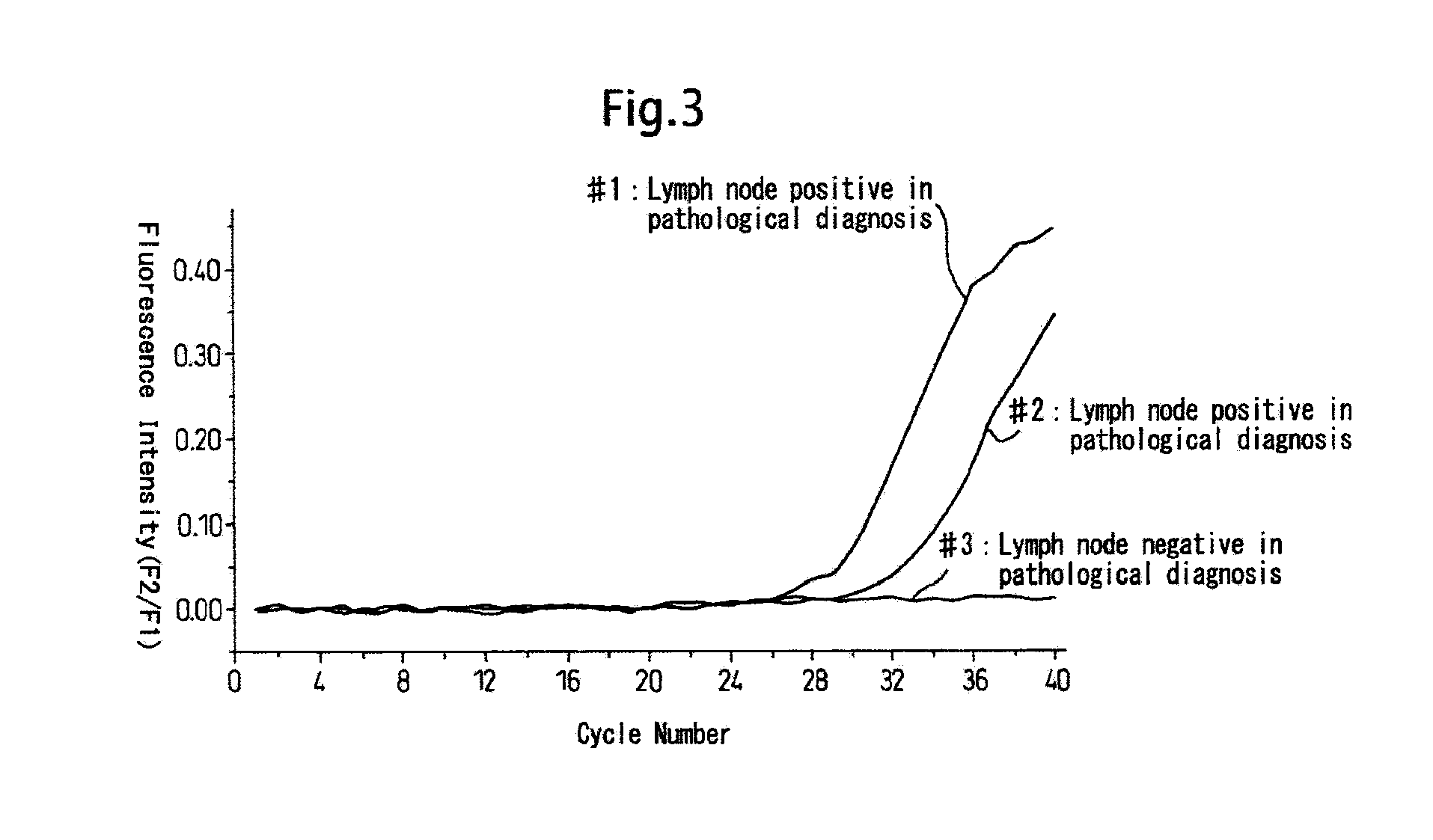Method for quick determination of cytokeratin 19 (CK19) and primers and probes therefore
a cytokeratin 19 and mrna technology, applied in the field of ck19 mrna determination, can solve the problems of limiting the time allowed for surgery, unable long time needed to judge the presence or absence of mrna, so as to reduce the time required for amplification and detection of ck19 mrna, and prevent the amplification of pseudogenes.
- Summary
- Abstract
- Description
- Claims
- Application Information
AI Technical Summary
Benefits of technology
Problems solved by technology
Method used
Image
Examples
example 1
Design of PCR Primers
[0105] As mentioned already, the pseudogene of a process type has been report for CK19. It is necessary to prepare PCR primers which are not affected even when such a pseudogene is contaminating the sample.
[0106] For such a purpose, three kinds of forward primers (F1 to F3) and two kinds of reverse primers (R1 to R2) were prepared. F1 to F3 and R1 were designed in such a manner that their 3′-terminus exhibit a mismatch site of the CK19 pseudogene and the CK19 mRNA. R2 was designed in such a manner that a boundary of intron-exon is present in its base sequence. F1 and R1 contain two mismatches to the CK19 pseudogene and F2, F3 and R2 have one mismatch to the CK19 pseudogene.
(SEQ ID No. 2)F1: TGAGTGACATGCGAAGC(799 to 815 of bases of SEQ ID No. 5)(SEQ ID No. 8)F2: CGCCAAGATCCTGAGTG(788 to 804 of bases of SEQ ID No. 5)(SEQ ID No. 9)F3: GACATGCGAAGCCAATAT(804 to 821 of bases of SEQ ID No. 5)(SEQ ID No. 4)R1: TGTGTCTTCCAAGGCA(1007 to 1022 of bases of SEQ ID No. 5)...
example 2
Design of Detection Probes
[0113] Two sets of detection probes were prepared and compared. With regard to donor probes (P1 and P1b), their 3′-terminus was labeled with FITC while, with regard to acceptor probes, their 5′-terminus was labeled with LC-Red 460.
Set 1(SEQ ID No. 11)P1: GTCATGGCCGAGCAGAACC(825 to 843 of bases of SEQ ID No. 5)(SEQ ID No. 12)P2: AAGGATGCTGAAGCCTGGT(846 to 864 of bases of SEQ ID No. 5)Set 2(SEQ ID No. 6)P1b: AAGCCTGGTTCACCAGCCG(856 to 874 of bases of SEQ ID No. 5)(SEQ ID No. 7)P2c: CTGAAGAATTGAACCGGGAGG(877 to 897 of bases of SEQ ID No. 5)
[0114] Set 2 was designed in such a manner that a boundary of exon-intron is located between the hybridization positions of the two probes while set 1 was not designed as such.
[0115] For evaluation of probe sets, 20 μl of a reaction solution containing the following components was placed in a glass capillary and subjected to a one-step RT-PCR using a Light Cycler® under the condition as shown in Table 1.
50 mM manganese...
example 3
Real-Time RT-PCR of CK19 mRNA
[0118] An example of a real-time RT-PCR of CK19 mRNA which is a positive control and human DNA and CK19 pseudogene is shown.
[0119] CK19 mRNA was diluted 10-fold in a stepwise manner and 105 to 102 copies were subjected to a one-step RT-PCR amplification using a Light Cycler®. Similarly, 500 ng of human DNA or 105 copies of CK19 pseudogene were amplified and detected by RT-PCR (time required was about 40 minutes). The compositions of the reaction solution (20 μl / PCR) were as follows below.
50 mM manganese acetate3.25 mMPCR primers F1 and R10.25 μM eachDonor probe P1b 25 nMAcceptor probe P2c100 nMTth DNA polymerase7.5 μl / reaction
[0120] The results are shown in FIG. 1 and FIG. 2. In those figures, the ordinate shows intensity of fluorescence while the abscissa shows PCR cycle numbers.
[0121] When CK19 mRNA was amplified by RT-PCR, fluorescent signals were generated in PCR cycle numbers depending upon the initial amount (FIG. 1) while, when human DNA or C...
PUM
| Property | Measurement | Unit |
|---|---|---|
| time | aaaaa | aaaaa |
| Tm | aaaaa | aaaaa |
| Tm | aaaaa | aaaaa |
Abstract
Description
Claims
Application Information
 Login to View More
Login to View More - R&D
- Intellectual Property
- Life Sciences
- Materials
- Tech Scout
- Unparalleled Data Quality
- Higher Quality Content
- 60% Fewer Hallucinations
Browse by: Latest US Patents, China's latest patents, Technical Efficacy Thesaurus, Application Domain, Technology Topic, Popular Technical Reports.
© 2025 PatSnap. All rights reserved.Legal|Privacy policy|Modern Slavery Act Transparency Statement|Sitemap|About US| Contact US: help@patsnap.com



